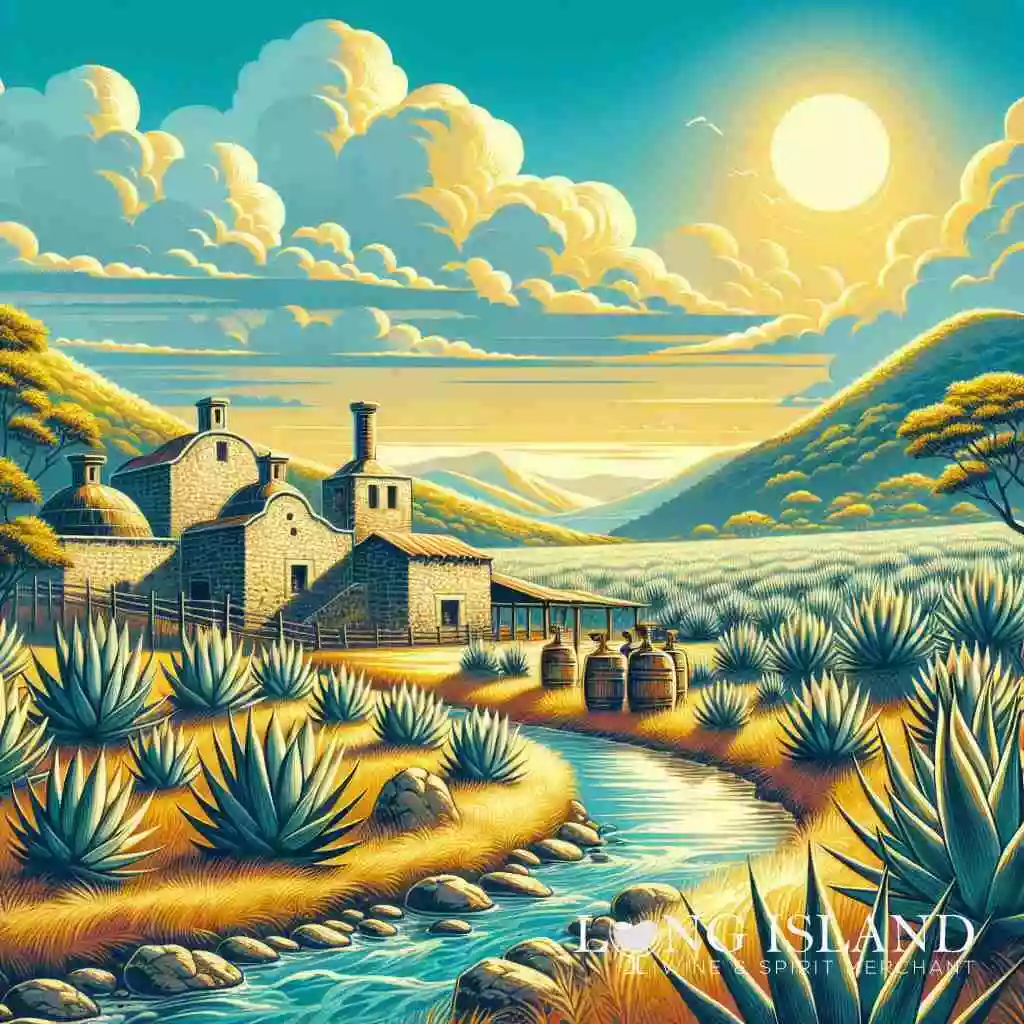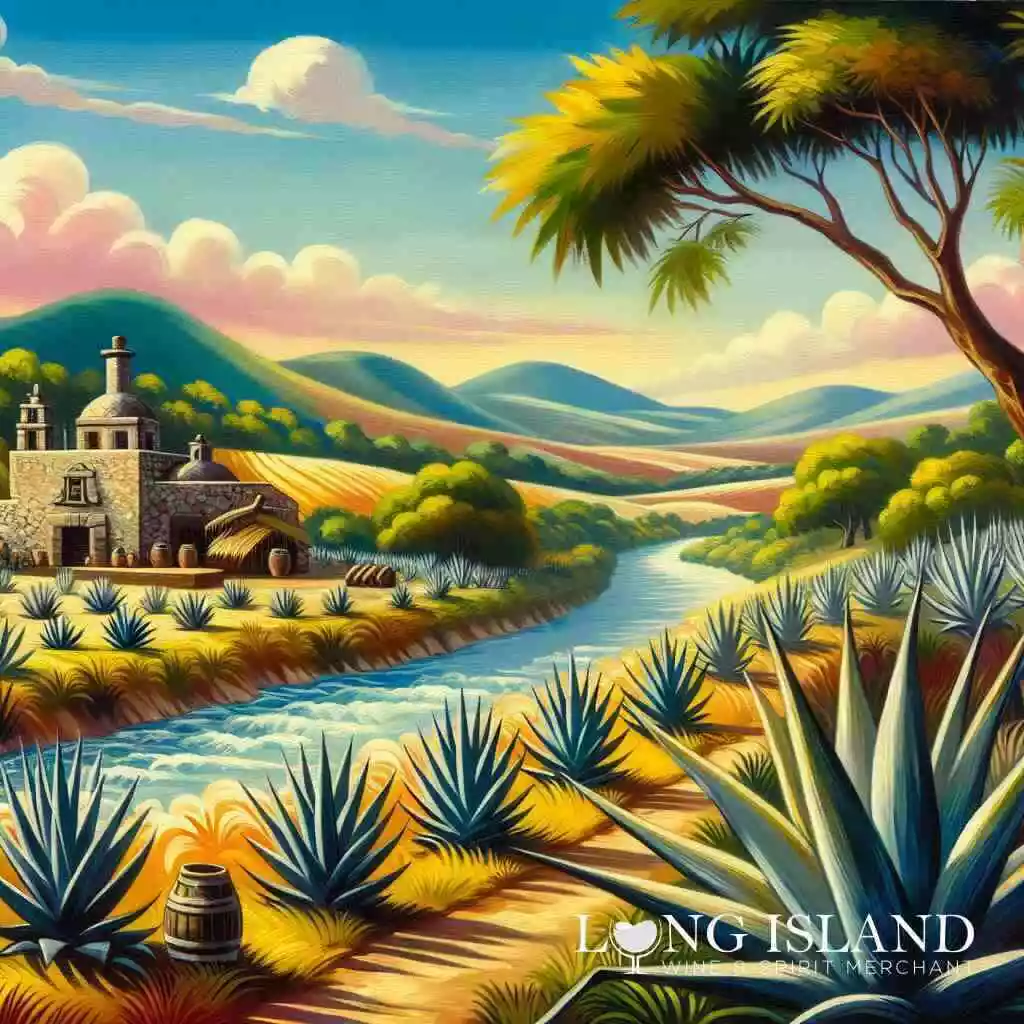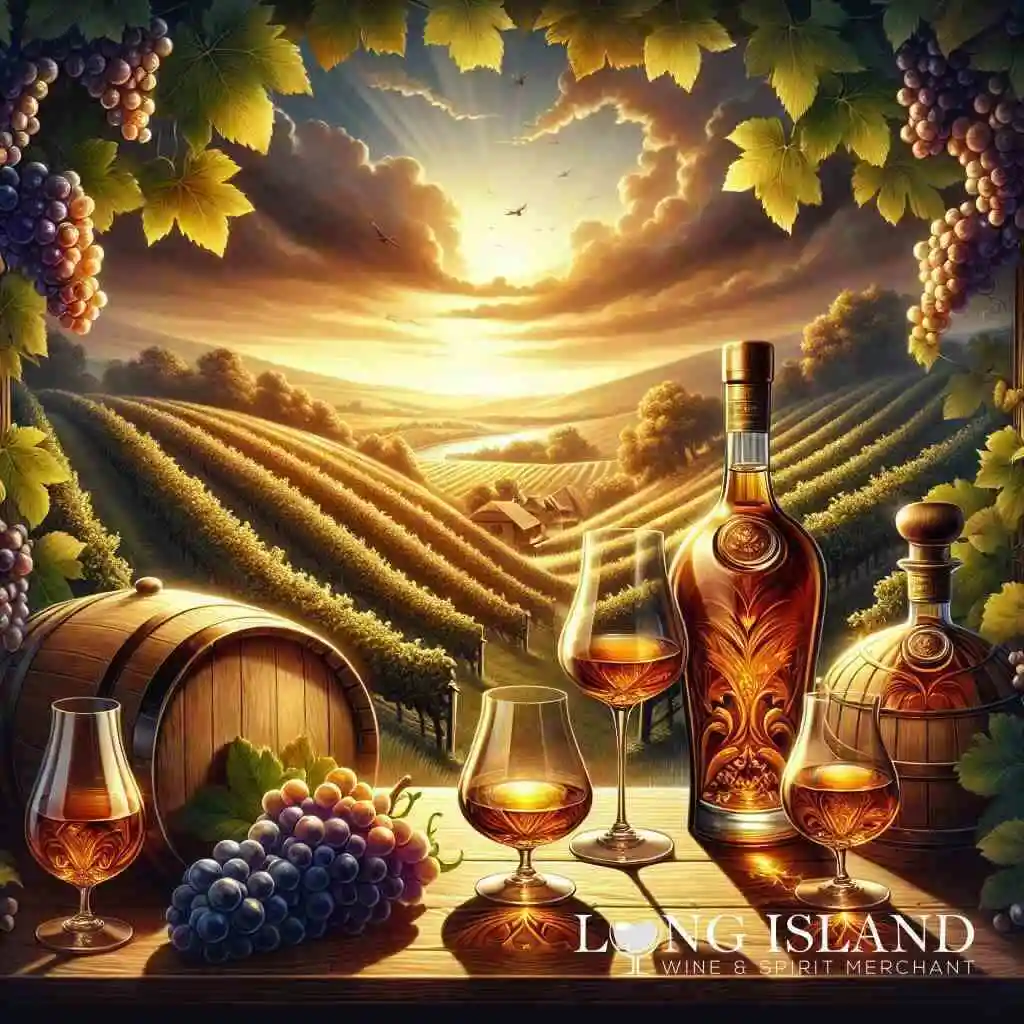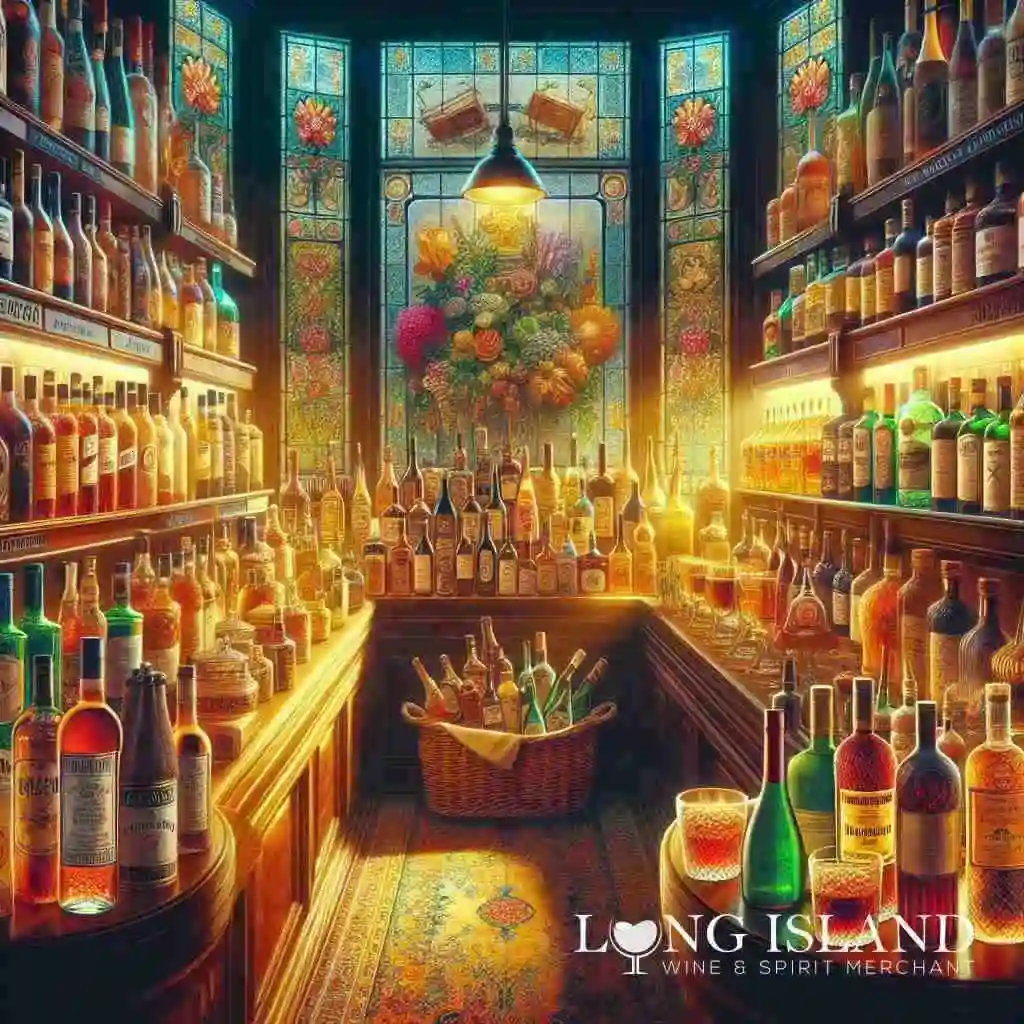
Comparing Tequila and Mezcal: A Taste Journey
September 27, 2024
Introduction: Unveiling the Mystique of Mexican Spirits
Overview of Tequila and Mezcal
Tequila and mezcal are two iconic beverages that are much more than mere alcoholic drinks; they are cultural symbols imbued with the history and spirit of Mexico. Tequila, globally recognized and vigorously regulated, is produced exclusively from the blue agave plant in specific regions of Mexico, mainly in Jalisco. Mezcal, on the other hand, offers a broader palette of flavors, moods, and methods derived from over 30 types of agave and produced across numerous regions in Mexico, each lending its unique character to the spirit.
Liquor Store Open, based in Commack, New York, but catering to customers across all 50 states, provides a platform to explore these exquisite spirits. The store offers a vast selection of both tequila and mezcal, ensuring a match for every palate and preference. Whether a seasoned drink enthusiast or a curious novice, anyone can delve into the world of these fine spirits and discover the tastes that resonate most deeply with them.
The Growing Fascination with Agave-Based Spirits
The allure of agave-based spirits has seen a significant resurgence, particularly amongst connoisseurs and cocktail fans across the globe. This fascination is not just due to the distinctive flavors but also the rich cultural heritage and artisanal production methods associated with these spirits. As mezcal emerges from tequila’s shadow, it brings forth an array of smoky, earthy flavors that are as intriguing as they are diverse. Similarly, tequila maintains its classic appeal, continuously adapting and evolving with modern distillation techniques while preserving its roots.
At Liquor Store Open, customers are invited to explore these dynamic spirits through various experiences, including tastings and food pairings. Through guided tequila tasting in Long Island, customers can deepen their understanding and appreciation of these liquors, making each sip a journey through the heart of Mexico.
What Sets This Article Apart
This blog post promises not just to narrate the story of tequila and mezcal but to engage in a deeper exploration of their unique characteristics. From understanding how each spirit is crafted to recognizing the nuances that differentiate them, this article is designed to educate and inspire. By leveraging the expertise of Liquor Store Open’s extensive selection and knowledgeable staff, readers will gain insights into not only selecting the best tequilas and mezcals but also mastering the art of pairing them with complementary cuisines.
Stay tuned as we embark on this detailed taste journey, comparing tequila and mezcal, and uncover the rituals and traditions that make these spirits not merely drinks but a profound cultural experience. The journey through the aromatic, smoky, and sometimes mystical world of agave awaits. Join us in transforming every tasting into an adventure and every glass into a story.
What Is Tequila and How Is It Made?
Defining Tequila
Tequila is a distilled spirit made from the blue agave plant, primarily in the surrounding area of Tequila, a small town in the state of Jalisco, Mexico. By Mexican law, tequila can only be produced in Jalisco and limited municipalities in the states of Guanajuato, Michoacán, Nayarit, and Tamaulipas. The spirit’s identity is deeply rooted in its regional production, as the volcanic soil surrounding the Tequila region is particularly suited to the growth of the blue agave. Moreover, tequila is segmented into categories based on aging processes, including Blanco, Reposado, Añejo, and Extra Añejo, which reflect its purity and the complexity of its flavors.
Key Regions Producing Tequila – The Role of Jalisco and Other Regions
Jalisco is the heartland of tequila production. The region’s unique climate and volcanic soil provide the ideal conditions for growing the blue agave plant. Beyond Jalisco, regions like Guanajuato, Michoacán, Nayarit, and Tamaulipas also contribute to tequila production, each adding subtle nuances to the flavor profile of the tequila produced. In these regions, agave grows differently due to variances in climate and soil composition, which in turn influences the sweetness and aroma profiles of the distilled tequila. The protected designation of origin (PDO) ensures that tequila’s heritage is preserved and that the beverage produced adheres to strict quality standards set by the Mexican government.
Step-by-step Tequila Production Process
The production of tequila involves several steps, each crucial to the spirit’s final flavor profile:
- Harvesting: The process begins with the harvesting of the blue agave, which is done by hand by experienced farmers known as jimadores. They use a tool called a coa to cut off the plant’s spiky leaves to reach the piña, the heart of the agave, which looks somewhat like a large pineapple.
- Cooking: The harvested piñas are then transported to distilleries, where they are cooked in large ovens. This cooking converts the piña’s complex fructans into simple sugars, essential for fermentation.
- Milling: After cooking, the piñas are crushed to extract the agave juice, which is called aguamiel. This juice contains the sugars needed for fermentation.
- Fermentation: The aguamiel is transferred to fermentation tanks, where yeast is added, and the sugars are converted into alcohol. Depending on the production method, this process can last from 48 hours to several days.
- Distillation: The fermented agave juice is then distilled twice to purify the alcohol, which intensifies its flavor and increases alcohol content. The first distillation results in a product called ordinary, and the second distillation produces a clearer and higher-proof spirit.
- Aging (optional): Depending on the type of tequila being produced, the distilled spirit may then be aged in oak barrels. Aging can last from two months to several years, and this process imbues the tequila with flavors from the wood and enhances its aromatic complexity.
- Bottling: Finally, the tequila is filtered and bottled. Each bottle of tequila must adhere to rigorous standards of identity and quality as stipulated by the Consejo Regulador del Tequila (CRT).
Each of these steps contributes to the distinctive taste and quality of tequila, making it not just a beverage but a craft. For more detailed insights into tequila’s varieties and what each type offers, consider exploring how tequila is made in more depth here.
What Is Mezcal and How Is It Made?
Defining Mezcal
Mezcal represents both tradition and the wild complexities of its native Mexican landscape. Unlike tequila, mezcal can be produced from over 30 types of agave, not just the blue agave. This diverse agave selection allows a vast spectrum of flavors and textures, making mezcal a fascinating study for any enthusiast. It is typically recognized by its smoky flavor, which is a result of the unique production processes it undergoes. Moreover, mezcal is not restricted to a specific geographic region. It can be made across most parts of Mexico, including Oaxaca, which is the most renowned region for producing some of the highest quality mezcal.
Mezcal-producing regions and their unique traits
Each region in Mexico where mezcal is produced imparts its distinct fingerprint on the final spirit. In Oaxaca, the rich soils and favorable climate conditions are ideal for cultivating different types of agave like Espadín, which is the most common agave used in mezcal production. Other regions such as Guerrero, Durango, and San Luis Potosí also contribute significantly to the mezcal scene, each adding its unique touches based on local agave varieties and artisanal production techniques. This geographical diversity is one of the reasons mezcal has such a rich tapestry of flavors and aromas.
Artisanal process of Mezcal production – From harvesting to distillation
The production of mezcal is labor-intensive and steeped in tradition, often passed down through generations. Firstly, the agave plant takes between 7 to 30 years to mature, depending on the species. Harvesters, known as ‘Jimadors,’ expertly select and remove the ripe agave’s leaves to reveal the ‘piñas’ or hearts, which hold the plant’s nectar. These piñas are then cooked in pit ovens-earthen mounds over hot rocks that are covered with earth for several days. This cooking process, which is distinctive in the creation of mezcal, imparts the characteristic smoky flavor that mezcal is known for.
Following cooking, the piñas are crushed and mashed, traditionally with a stone wheel drawn by horse, to extract the juices for fermentation. Natural fermentation occurs in open-air vats, allowing the regional wild yeasts to influence the flavor profile of the mezcal. After fermentation, the mash goes through a double distillation process in copper or clay stills, which further refines and strengthens the mezcal.
The dedication to maintaining these time-honored methods can be further explored in a detailed guide on how mezcal is made, emphasizing the importance of tradition and craftsmanship in producing this unique spirit.
This artisanal approach not only preserves the rich cultural heritage associated with mezcal but also ensures that each batch carries distinctively complex and nuanced flavors that are as varied as the regions from which they hail. Through understanding and appreciating these meticulous processes, one gains a deeper appreciation for mezcal, not just as an alcoholic drink but as a craft handed down through generations, embodying the rich landscapes and cultures of Mexico.
Comparing Tequila and Mezcal: Flavor, Types, and Traditions
Exploring the flavor profiles: Smoky Mezcal vs. Smooth Tequila
The sensory experience of tequila and mezcal can be as rich and varied as their history. While both spirits derive from agave, their flavor profiles diverge significantly due to the distinct production processes and agave varieties used. Tequila, typically smoother and more subtle, often features fresh, crisp notes reflecting its pure distillation methods and the blue agave’s characteristics. Flavors range from the herbal and citrusy in younger tequilas to the warmer, vanilla tones of aged varieties.
Mezcal, with its artisanal and traditional fire pit roasting process, typically boasts a robust, smoky flavor that sets it distinctly apart from tequila. This smokiness, reminiscent of a peaty Scotch, overlays a spectrum of complex flavors, from floral to earthy, imparted by the diverse agave varieties utilized. Each sip of mezcal unfolds the earthy nuances of the Mexican terroir in a way that no other alcoholic drink can replicate, offering an authentic taste of the landscape’s wild spirit.
Different types of Tequila and Mezcal
Understanding the types of each spirit is crucial in distinguishing their unique attributes. Tequila is classified into five main types: Blanco (or Silver), Reposado, Añejo, Extra Añejo, and Joven. Unaged Blanco offers the purest taste of agave. At the same time, Reposado and Añejo are aged in oak barrels for two months to three years, respectively, developing deeper flavors and a golden hue. Extra Añejo, aged for over three years, presents the richest and most complex profiles.
Mezcal types, on the other hand, are commonly categorized by their aging process into Joven (unaged), Reposado (aged at least two months), and Añejo (aged for a minimum of one year). However, the differentiation in mezcal also arises from the variety of agave plants used, such as Espadín, Tobalá, or the wild-harvested Jabalí, each contributing a unique flavor and texture to the final spirit.
Cultural and traditional distinctions
The cultural and traditional distinctions between tequila and mezcal are deep-rooted in their regions of origin and production methods. Tequila’s production is highly industrialized, regulated by the CRT (Consejo Regulador del Tequila), and predominantly occurs in Jalisco. This has fostered a global identity that associates tequila with a sense of refinement and festivity.
Mezcal, however, remains closely tied to familial and communal operations, predominantly in Oaxaca but also across other parts of Mexico. Its production is often part of a larger cultural ritual involving local communities and traditional celebrations. As a result, mezcal is frequently imbued with a sense of place and tradition, offering drinkers not just a beverage but a deep cultural experience. The use of ancient production techniques further enriches this connection, passed down through generations, maintaining the spirit’s authenticity and heritage.
In summary, tequila and mezcal offer more than just alcoholic enjoyment; they are a gateway to understanding Mexican culture and traditions. Each spirit, with its distinct flavors and background, invites enthusiasts on a unique sensory journey that not only pleases the palate but also deepens appreciation for the rich histories they encapsulate. As one explores these spirits, particularly through guided tastings or expert pairings, their narrative and significance unfold, offering a richer experience with each sip.
Selecting, Tasting, and Pairing
How to select the best Tequila and Mezcal for tasting
Selecting the ideal tequila or mezcal for tasting can significantly enrich your experience, allowing you to appreciate the complex profiles of these exquisite spirits. When making a selection, it’s important to consider the type, flavor profile, and purpose of your tasting. For beginners, a Blanco tequila or a Joven mezcal offers a pure, unadulterated taste of the agave plant. These varieties are typically not aged and capture the raw essence of the agave.
For those interested in exploring more nuanced flavors, aged varieties like Reposado or Añejo provide additional layers of complexity due to their time spent in oak barrels. These spirits introduce notes of vanilla, caramel, and spices, which are the results of the aging process.
If you are seeking to understand the full range of what mezcal can offer, consider a variety pack from different regions. This approach allows you to taste the impact of terroir (the natural environment in which the agave was grown) on the final product. Each region imparts a distinct characteristic to the mezcal, from mineral-rich tones to earthy or floral notes.
Guidelines for tasting – Engaging the senses
Tasting tequila and mezcal is an art that engages all the senses. Begin by examining the color of the spirit, which can tell you a lot about its age and the type of barrel used for aging. Swirl the spirit gently in a glass to release its aroma. Inhale deeply to identify primary scents- these could range from fresh, grassy notes in a Blanco to smoky undertones in a mezcal.
When you taste, take a small sip and let it coat your mouth. This approach gives you the full range of flavors, from initial sweetness on the tip of the tongue to a peppery finish that might linger in aged varieties. Pay attention to the mouthfeel as well; a high-quality spirit should feel smooth, not harsh.
Tequila and mezcal are best enjoyed at room temperature without added ice or water, as cold can suppress some of their more delicate flavors and aromas. This method ensures that you can fully appreciate the craftsmanship behind each bottle.
Pairing ideas for Tequila and Mezcal with food
Pairing food with tequila and mezcal can elevate your tasting experience, highlighting the unique characteristics of each spirit. For tequila, particularly the lighter Blanco and Reposado, consider fresh and zesty dishes like ceviche or tacos with lime and cilantro. These flavors complement the herbal and citrus notes in the tequila.
Mezcal, with its distinctive smoky flavor, pairs well with more robust dishes. Think grilled meats or barbecue, where the smokiness of the meal complements the smokiness of the spirit. For a truly authentic experience, try pairing mezcal with Oaxacan cuisine-mole negro, grilled cactus, or tamales filled with spicy meats.
For more creative pairing suggestions, including mezcal with various dishes, consider checking out resources dedicated to pairing mezcal with food. These guides provide detailed information on how to enhance your culinary adventures with the right mezcal.
By selecting the right spirit, engaging all your senses during the tasting, and pairing your beverages wisely, you can transform a simple tasting into an unforgettable journey through the rich landscapes and traditions of Mexico. Whether you are sharing this experience with friends or enjoying a personal exploration, these guidelines will ensure that each sip is a discovery in itself.
Conclusion: Your Journey Through Agave Spirits
Encouraging exploration and education
As we wrap up this immersive journey through the distinct and vibrant world of tequila and mezcal, it’s clear that these spirits offer far more than just a simple drink. They are a deep dive into the rich, agricultural, and cultural tapestry of Mexico, represented in every sip. Whether you are a spirit enthusiast or a curious beginner, the exploration of these agave-based spirits can be a rewarding educational pursuit.
By understanding the meticulous craftsmanship behind each bottle-from the harvesting in the sun-drenched agave fields of Jalisco and Oaxaca to the intricate distillation and aging processes gain more than just knowledge. You earn respect and appreciation for the tradition and innovation interwoven into the very fabric of tequila and mezcal. These spirits tell a story, one of heritage, terroir, and human endeavor, and they invite you to become part of this continuous narrative.
Recapping the unique aspects of Tequila and Mezcal
Tequila and mezcal are similar yet splendidly unique spirits, each owning a character shaped by their heritage and artisanal production processes. Tequila, with its smoother and more refined palate, offers a crisp and elegant complexity, especially in its aged forms. Mezcal challenges the norms with its bold, smoky flavors that echo the ancient practices of its production, providing a rugged reflection of its landscape.
Both spirits celebrate the versatility of agave, with mezcal showcasing a wider variety and offering an extensive palette for the connoisseur to explore. From the clear, sharp Blanco to the deep and resonant Extra Añejo, tequila’s range is intriguing. Meanwhile, mezcal brings an artisanal charm with varieties that range from Joven to Añejo, each marked by a distinctive smokiness richly evocative of its earthy origins.
Invitation to explore further at Liquor Store Open
For those inspired to delve deeper into the world of tequila and mezcal, Liquor Store Open offers a gateway to a curated collection of these fine spirits. Located on Long Island and serving all 50 states, our selection caters to all tastes and preferences. Whether you desire to refine your palate, explore diverse agave types, or enjoy a unique bottle with friends, we are here to enhance your experience.
At Liquor Store Open, you’re not just purchasing a bottle; you’re acquiring a piece of heritage crafted with passion and meant to be savored. We invite you to visit us online or in-store for personalized recommendations, expert advice, and exclusive access to premium and craft spirits from around the world. Start your taste journey with us today, and turn every sip into an exploration of flavor and tradition. Visit the Liquor Store Open to uncover the myriad tastes and stories of these exceptional Mexican spirits. Together, let’s keep the spirit of discovery alive!
Frequently Asked Questions
Question: What types of tequila and mezcal can I find at Liquor Store Open, and how do you ensure their quality?
Answer: At Liquor Store Open, you can explore an extensive range of both tequila and mezcal, including premium brands and artisanal options. We ensure the quality of our offerings by sourcing spirits directly from reputable producers in the renowned regions of Jalisco for tequila and Oaxaca for mezcal, among others. Each product is selected to represent the rich heritage and distinct flavor profiles associated with its origin. Explore our wide range of mezcal and tequila. So, whether you’re looking for a smooth Blanco tequila or a smoky artisanal mezcal, you can trust that each bottle in our collection represents the pinnacle of quality in agave spirits.
Question: How can I learn more about the different types of agave used in the production of mezcal offered at Liquor Store Open?
Answer: Liquor Store Open provides detailed product descriptions and expert recommendations for our mezcal offerings, highlighting the specific types of agave used, such as Espadín, Tobalá, and Jabalí. We also offer educational resources that delve into the distinctions between these agave types and how they influence the flavor and character of the mezcal. By visiting our website, you can access rich content and even participate in mezcal tasting events where you can learn directly from experienced connoisseurs.
Question: Can I host a guided tequila tasting session through Liquor Store Open for a private event?
Answer: Absolutely! Liquor Store Open specializes in curating bespoke tequila tasting sessions for private events. Our expert team can tailor a tasting experience that suits the theme of your event, complete with a selection of high-quality tequilas, pairing ideas, and detailed insights into the production and flavor profiles of each spirit. Whether it’s a corporate gathering, a celebratory occasion, or an educational workshop, we ensure an engaging and informative experience for all participants.
Question: In the blog post ‘Comparing Tequila and Mezcal: A Taste Journey,’ artisanal processes are emphasized. How does Liquor Store Open support small-scale artisanal mezcal producers?
Answer: Liquor Store Open is committed to supporting small-scale artisanal mezcal producers by featuring their unique products in our inventory. We prioritize relationships with producers who use traditional methods and sustain local communities in Mexico. By purchasing these artisanal mezcals, you’re not only enjoying a high-quality, distinctive spirit but also contributing to the preservation of age-old production techniques and the economic stability of the regions where these spirits are crafted. Discover more about the artisanal processes involved. Our platform offers a connection to these authentic experiences, celebrating the rich cultural heritage and artisanal excellence of mezcal.




